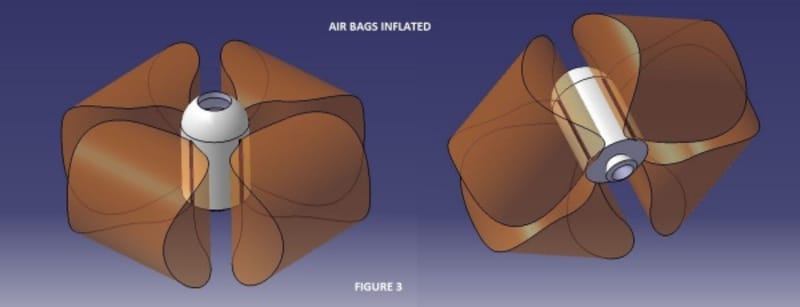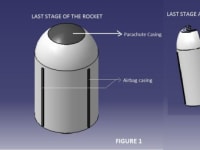In this Space Age, satellites have become an important resource for every country. The designing, building, and launching of satellites have become a challenging process that involves high costs. Rocket failures are a great loss for a country that spends billions of dollars in building the satellites which get destroyed because of a technical failure in the rocket carrying it.
For this, we can have a mechanism that can recover the satellite from the rocket in case of a technical snag. In my model, the last stage of the rocket which houses the satellite can be recovered. The model has the last stage of a rocket that can be separated from the other stages of the rocket in case of an emergency. The last stage is modified to house a parachute and airbags. The Parachute is housed at the top of the last stage and the airbags are kept in the stage's casing at four locations as in figure 1.
When a technical failure is detected at any stage of the rocket launch, the last stage of the rocket is separated and is moved with thrusters away from the rocket which is exploding or to be exploded. The parachute which is housed at the top of the last stage is deployed. This slows down the speed of the falling rocket. When the rocket reaches near the ocean water, the air bags around the rocket are inflated such that the rocket floats on the water. The rocket can be recovered later and the satellite can be reused for the next launch.
This mechanism can save billions of dollars which is put into building the satellites. This mechanism can be used in future missions with a few modifications to the last stage of existing launch vehicles.
Like this entry?
-
About the Entrant
- Name:Vikas Surya Krishnakumar
- Type of entry:individual
- Software used for this entry:CATIA
- Patent status:none








